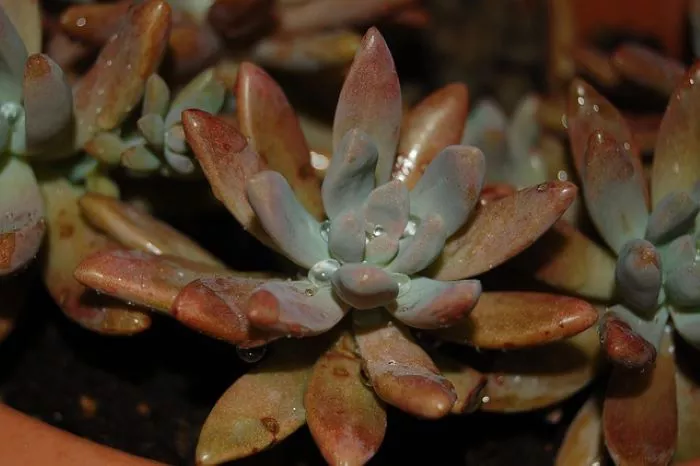Succulents are popular for their unique beauty and low maintenance requirements. They can thrive in various environments, making them ideal for both novice and experienced gardeners. One of the rewarding aspects of succulent care is the ability to propagate them by cutting and replanting. This article will provide a professional guide on how to cut succulents for replanting. It will cover the necessary tools, techniques, and care needed for successful propagation.
Understanding Succulent Cutting
Cutting succulents for replanting is a method of propagation that allows gardeners to create new plants from existing ones. This process involves taking a portion of the plant, allowing it to callous, and then planting it to grow roots. By understanding the basics of succulent cutting, you can increase your plant collection and enjoy the satisfaction of nurturing new growth.
Choosing the Right Succulent
Before you begin cutting, it is essential to select a healthy and suitable succulent for propagation. Some succulents are more conducive to cutting than others. Popular choices include:
Echeveria: Known for their rosette shape and vibrant colors, Echeverias are easy to propagate from leaf or stem cuttings.
Sedum: This hardy succulent can be propagated from both leaves and stems, making it an excellent choice for beginners.
Jade Plant (Crassula ovata): Jade plants are resilient and can be successfully propagated from stem cuttings.
Aloe Vera: Aloe Vera produces offsets that can be removed and replanted, but stem cuttings can also be effective.
Gathering the Necessary Tools
Having the right tools is crucial for successful cutting and propagation. Here are the basic tools you will need:
Sharp, Clean Cutting Tool: Use a sharp knife or scissors to make clean cuts. Sterilizing the tools with rubbing alcohol can help prevent infections.
Potting Soil: A well-draining soil mix is essential for succulents. You can use a commercial cactus mix or create your own by mixing potting soil with sand and perlite.
Containers: Small pots or trays with drainage holes are ideal for planting your cuttings. Ensure that the containers are clean to avoid contamination.
Water: While succulents do not require much water during the initial stages, you will need some for light watering after planting.
Cutting Succulents for Replanting
Once you have selected your succulent and gathered your tools, you can begin the cutting process. Follow these steps for effective cutting:
Select a Healthy Stem or Leaf: Choose a healthy stem or leaf from the parent plant. Look for plump and firm parts, avoiding any that are damaged, shriveled, or diseased.
Make a Clean Cut: Using your sharp tool, cut the stem just below a leaf node. If you are taking a leaf cutting, gently twist the leaf from the stem to detach it, ensuring you take the entire leaf without leaving any part behind.
Allow to Callous: Place the cuttings on a dry surface in a shaded area for about three to five days. This allows the cut ends to callous over, which helps prevent rot when planted.
Prepare the Soil: Fill your containers with the well-draining soil mix. Water the soil lightly to moisten it before planting the cuttings.
Plant the Cuttings: For stem cuttings, insert the calloused end into the soil, ensuring that at least one leaf node is buried. For leaf cuttings, lay the calloused leaf on top of the soil without burying it.
Provide Proper Conditions: Place the containers in a bright location with indirect sunlight. Avoid direct sunlight, as it can scorch the cuttings.
Water Sparingly: After a week, lightly mist the soil to keep it slightly moist. Avoid overwatering, as excess moisture can lead to rot. Water only when the soil is completely dry.
Caring for Newly Cut Succulents
After cutting and planting your succulents, proper care is essential for their growth. Here are some tips to ensure successful rooting and growth:
Light Requirements: After a few weeks, gradually introduce the new plants to more light. This helps them acclimate and encourages healthy growth.
Watering: Continue to water sparingly. As the new plants establish roots, you can increase the frequency of watering slightly, but always allow the soil to dry out between waterings.
Fertilization: Wait at least a month before fertilizing new succulents. Once they are established, use a diluted, balanced fertilizer every four to six weeks during the growing season.
Transplanting: Once the new succulents outgrow their containers, consider transplanting them into larger pots. This will give them more room to grow and thrive.
Common Challenges in Cutting and Replanting
While cutting and replanting succulents can be a rewarding experience, challenges may arise. Here are some common issues and how to address them:
Rotting Cuttings: If your cuttings are rotting, it may be due to overwatering. Ensure that the soil is well-draining and allow it to dry completely between waterings.
Leggy Growth: If new plants grow tall and spindly, they may not be receiving enough light. Move them to a brighter location to encourage compact growth.
Pests: Watch for pests such as mealybugs or aphids. If you notice any infestations, treat them promptly with insecticidal soap or neem oil.
Conclusion
Cutting succulents for replanting is a simple and fulfilling process. By understanding the techniques and providing proper care, you can successfully propagate new plants from your existing succulents. Whether you choose to cut leaves or stems, the key is to be patient and attentive to their needs. With time and care, you will have a thriving collection of succulents that can enhance your home or garden. Enjoy the journey of propagation and watch your succulent collection flourish.


